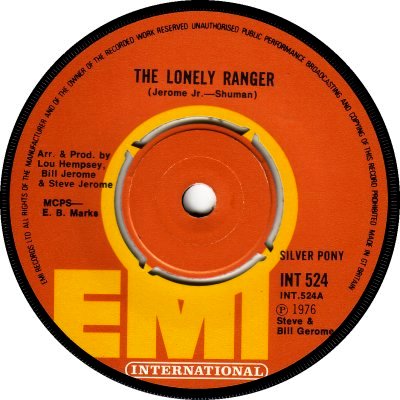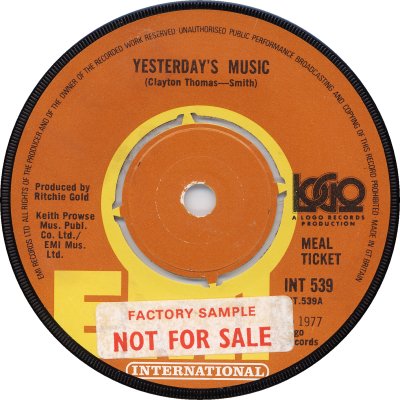



EMI International ran from 1974 to early 1980, though there was one reissued 'afterthought' on the label in late 1980. 'Music Week' of the 29th of June 1974 reported that the label was to be launched in a bid to expand EMI's roster of overseas artists, and that no British artists were to be signed to it. The material on it was to be provided in part by those artists and in part by the licensing of existing overseas catalogues and masters. Billboard magazine (6th July 1974) added that EMI International was being brought into being as part of a drive to split EMI into domestic and overseas divisions, and that it was intended as a successor to Stateside (q.v.). 'MW' of the 16th of August 1975 revealed that EMI had expansion plans for its new label and was looking for talent for it in the USA; that said, I haven't found any evidence that the signing and recording of overseas artists actually took place - all the records that I've seen on on the label have been credited to outside production companies rather than recorded by EMI themselves. The 'overseas product only' approach seems to have evolved into a general 'product licensed from anywhere' one: in August 1976 a single derived from UK company Big Bear Records (q.v.) was issued on EMI International - 'Jungle Strut' by Muscles (INT-526) - and from the summer of 1977 product originating in the UK featured on the label frequently. It may be that EMI's dividing itself into two divisions - an 'Own Repertoire Division' for in-house material and a 'Licensed Repertoire Division' for material from the likes of Motown, MCA, Rak, Rocket and MAM - led to EMI International becoming the Licensed Repertoire Division's generalized equivalent of the main EMI label.
Singles other than the late 1980 reissue were numbered in an INT-500 series; the solitary EP, by David Coverdale's Whitesnake, was numbered INEP-751. EMI International kept the same label design throughout its existence, with one or two exceptions for particular artists. Frequently the licensing company's logo was added: the second example shown above came from Logo Records, the third from Sunburst. In the case of Jonathan King's UK Records (q.v.) the UK label was used instead of the EMI International one, though the three singles involved still had INT-500 numbers. Singles by the Punk group X-ray Spex also had their own label design; having few other labels to file under 'X' I have given them a separate page (see 'X-ray Spex') - belated justification for that decision came from the Punk77 website. The Whitesnake EP also had its own discrete design, which logically enough was white and featured a snake. Demonstration copies could either be stickered (2) or overprinted (3), in the usual EMI fashion. Releases covered a whole spectrum of styles, from Soul and Funk through Country and Novelty items to Punk and Rock, though EMI International's early sourcing of product from the USA led to a slight Soul / Funk bias in the first couple of years. EMI's Licensed Repertoire Division was shut down in January 1980, leading to redundancies and to disturbance for the labels that had been under its wing; it looks as though EMI International may well have been a casualty of the reorganization.



Copyright 2006 Robert Lyons.

